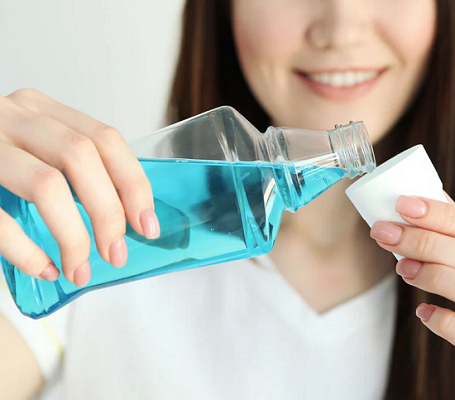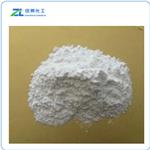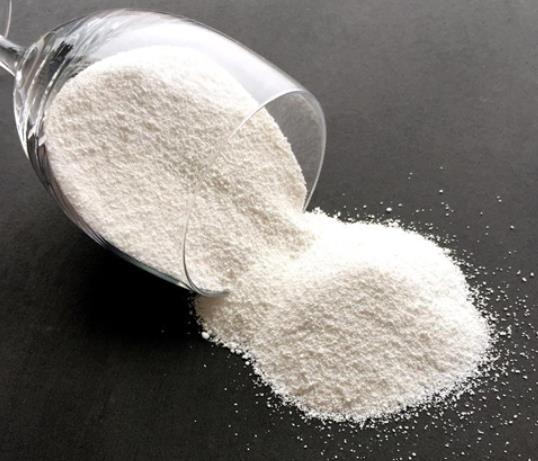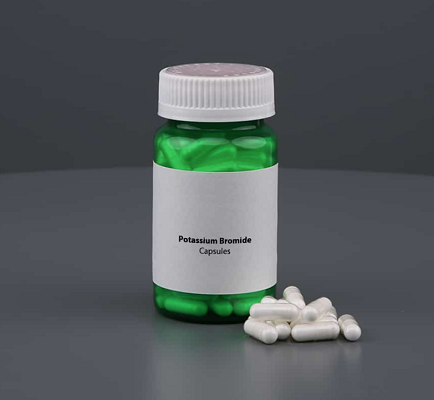What is Chlorhexidine mouthwash?
Introduction
Chlorhexidine (CHX) is a bisbiguanide developed in the 1940s in the UK and has been marketed as a general disinfectant. In the 1970s, its antiplaque activity was discovered, and by 1976, it was available as a mouthwash. Oral biofilm and its associated bacteria have been linked to the pathogenesis of various oral diseases, including halitosis, caries, gingivitis, and periodontitis. Periodontal disease in the US has been diagnosed in approximately 47.2% of adults 30 years and older and 70.1% of adults 65 years of age and older. CHX mouthwash is the most potent chemotherapeutic agent and the gold standard in reducing S mutants and oral biofilm. In dentistry, CHX products are available by prescription and include formulations such as mouthwashes, gels, chips, and varnishes[1].

Chlorhexidine mouthwash
CHX mouthwash is the near-neutral solution (pH range 5-7), only advised for topical use and never for systemic administration. Being cationic, it binds to skin, mucosa and tissues, making it poorly absorbed across these membranes. After a single rinse, 30% may remain in saliva for up to 5 hours and on the oral mucosa for up to 12 hours, with plasma levels being undetectable. CHX is poorly absorbed from the gastrointestinal tract, even when large volumes are ingested. It is generally considered safe for oral use, but some side effects and complications have been reported.
Mechanism of action
As an antiseptic mouthwash, CHX has an anti-microbial effect on bacteria, fungus and viruses causative for several oral diseases. In vitro, the anti-bacterial effects of CHX all relate to altered cell membrane permeability. At low concentrations (0.02%-0.06%), CHX causes displacement of Ca2+ and Mg2+ and loss of K+ from the cell wall, resulting in a bacteriostatic effect. At high concentrations (>0.1%), CHX causes leakage of all the main intracellular components out of the cell, resulting in a bactericidal (cell lysis and death) effect. The anti-viral effects of CHX are also due to altered cell membrane permeability, and ultimately, CHX can inactivate enveloped viruses, such as herpes simplex virus, which are associated with cold sores. However, CHX has little virucidal activity on non-enveloped viruses, including human papilloma (HPV), which may be associated with oral cancers. The anti-fungal effects of CHX, however, relate to the prevention of biofilm formation on both biological and non-biological surfaces by species such as Candida rather than disrupting the structure or cellular membrane of the microbe. For example, CHX can reduce the amount of Candida albicans adhering to the surface of dentures and decrease the number of Candida albicans residing on soft tissues in vivo, such as the oral mucosa.
Side effects
CHX as a mouthwash or topical oral gel is not without adverse effects, some of the most common being dry mouth (xerostomia), altered taste sensations (hypogeusia), specifically salt and bitter, and a discoloured or coated tongue. Despite antiplaque properties, increased calculus formation has also been reported with 0.12% CHX mouthwash. Other less common side effects include burning sensations (glossodynia), desquamation of the oral mucosa, swelling of the parotid gland and oral paraesthesia. However, tooth staining is probably the most unwanted outcome that deters patients from using CHX mouthwash. This is common once usage exceeds several weeks due to non-enzymatic browning (Maillard reaction) and the production of pigmented metal sulphide formation in the pellicle. This, in turn, can also allow tin and iron binding reactions with dietary aldehydes and ketones that enhance the precipitation of food components onto teeth. Nevertheless, formulations of CHX are now available to prevent tooth staining, for example, 0.2% Curasept ADSTM, where an anti-discoloration system (ADS) has been added to reduce tooth surface staining via inhibition of the Maillard reaction and protein denaturation. There is also no evidence from a systematic review that ADS does not affect the ability of CHX to reduce gingival inflammation and plaque scores[2].
The more potentially serious side effects associated with the oral use of CHX are the possible Type IV and Type I hypersensitivity reactions accompanied by severe anaphylaxis. For CHX, these are reported at an incidence of 0.78 per 100,000 exposures. There are also case studies reporting that CHX mouthwash can lead to respiratory arrest and death due to severe anaphylactic responses.
Another emerging issue with CHX is that of Antimicrobial resistance (AMR), whereby the micro-organisms it is designed to kill adapt and become resistant, which means that the mouthwash becomes less effective. There are several mechanisms by which this may occur, including mutation in or the addition of genetic material, leading to changes in cell membrane structure (increased expression of efflux pumps) and promoting the cross-resistance of other bacteria to antibiotics, including amongst the most multi-drug resistant species. In addition to allergies and staining, AMR must be considered when recommending CHX use.
[1] Frank Poppolo Deus, Aviv Ouanounou. “Chlorhexidine in Dentistry: Pharmacology, Uses, and Adverse Effects.” International dental journal 72 3 (2022): Pages 269-277.
[2] Zoë L.S. Brookes . “Current uses of chlorhexidine for management of oral disease: a narrative review.” Journal of dentistry 103 (2020): Article 103497.
References:
[1] FRANK POPPOLO DEUS A O. Chlorhexidine in Dentistry: Pharmacology, Uses, and Adverse Effects[J]. International dental journal, 2022, 72 3: 261-420. DOI:10.1016/j.identj.2022.01.005.[2] ZO? L.S. BROOKES . Current uses of chlorhexidine for management of oral disease: a narrative review[J]. Journal of dentistry, 2020, 103. DOI:10.1016/j.jdent.2020.103497.
Related articles And Qustion
See also
Lastest Price from Chlorhexidine manufacturers

US $1.00/kg2025-04-21
- CAS:
- 55-56-1
- Min. Order:
- 1kg
- Purity:
- 99%
- Supply Ability:
- 10 mt

US $120.00/kg2025-04-15
- CAS:
- 55-56-1
- Min. Order:
- 1kg
- Purity:
- 99%
- Supply Ability:
- 10ton



